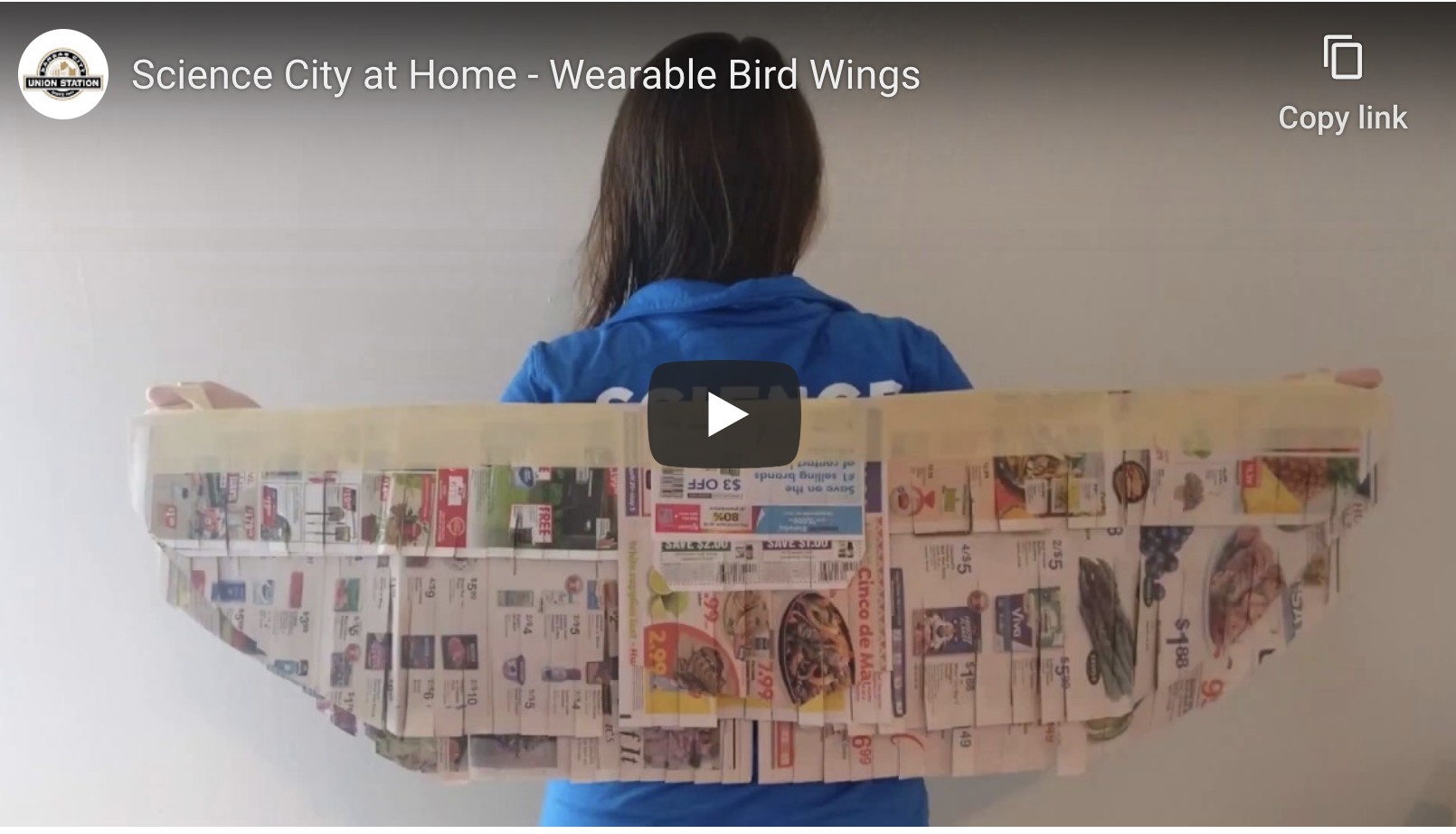The four forces of flight are weight, lift, drag and thrust. These forces affect all flying things, including birds and kites! A force is a push or pull acting upon an object. Forces can help with flight, or make flight more difficult. Lift and Thrust are the forces that help flying things get off of the ground. Lift is a push upward and Thrust is a push forward. Birds get lift and thrust from flapping their wings and taking advantage of wind in a similar way to kites. The other forces of flight acting on objects are Weight and Drag. These forces pull objects down toward the ground (weight) and backward from the direction of flight (drag). In order for something to fly, its Lift and Thrust must be stronger than its Weight and Drag, kind of like a game of Tug-o-War!
Birds are able to create their own Lift and Thrust using their wings. Today, we will be learning about the form and structure of bird wings while constructing a pair of our own!
SAFETY NOTE: The wings we will make today are not strong enough to be able to safely support the weight of a human body and help you actually fly like a bird, but they make a great costume piece. Play safely!
Supplies:
-
Tape
-
Scissors
-
Newspaper
-
Measuring tape
-
Thin cardboard (a cereal box or snack food box)
Step 1: Measure Your “wingspan”
A bird’s wingspan is the distance between the tip of one wing to the tip of the other. To find out your wingspan, stand up straight with your arms out to the side, using your body to make the letter “t”. Ask a friend or adult to use a measuring tape to measure the distance from fingertip to fingertip- this will be your wingspan!
Step 2: Create “bones” for Your Wings
Cut your cardboard box into long strips that are about 4 inches thick. Arrange the strips of cardboard so that they form a rectangle as long as your wingspan and tape them together. The cardboard will be like the bones inside of a bird’s wings, providing structure and strength to the wings. Did you know that birds have special bones that help them fly? A bird’s bones are hollow, making their bodies very lightweight and therefore reducing the amount of lift needed to get a bird off of the ground.
Step 3: Add “feathers” to Your Wings
We will be adding feathers made from newspaper to our bird wings in layers. If you look closely at the wings of a bird, you will notice that the feathers come in different shapes and sizes. We will be adding our feathers in layers based off of the different layers of feathers on a real bird’s wings.
Step 4: Add Our Primary and Secondary Feathers
First up will be the Primaries and Secondaries. Use one sheet of newspaper for this layer (meaning four printed pages of the paper, or one giant paper folded in half) and taped it to the cardboard along the folded edge of the paper. As you can see in the image, I taped this layer so that it aligns with the center line of my “bones” which I marked using a pen.
Step 5: Add the Primary and Secondary Coverts
Next, add the Primary Coverts and Secondary Coverts using another full sheet of newspaper and taping along the fold again. This time, align the paper with the outer edge of the “bones” so that the feathers cover the entire wing.
Step 6: Add the Alula and Marginal Coverts
Finally, I added the Alula and Marginal Coverts using a half sheet of newspaper folded in half to make a long rectangle, and the Scapulars using a half sheet folded in half to make a short rectangle (see photos).
Step 7: Shape and Fringe Cut the Feathers
To shape the feathers, draw an arc from the inside edge of the primaries and primary coverts to the outer tip of the wing and cut along the arc as shown in the picture. To create a feather effect, cut the paper into a 1-2 inch thick fringe as shown, being careful to not trim all of the layers at once.
Step 8: Repeat on the Other Wing
Repeat the steps above on the other side of your cardboard strip to create the other wing.
Step 9: Create and Attach Hand Straps
Your wings are almost ready to wear! The final step in this tutorial is to add hand straps to your wings so that you can wear them. To do this, I used a piece of tape folded in half lengthwise along the sticky side and curled into a loop. I attached the tape loops to the ends of my wings, where my hands are if I stretch my arms out. You may also try using a string or shoelace instead of tape if you would like stronger loops!


